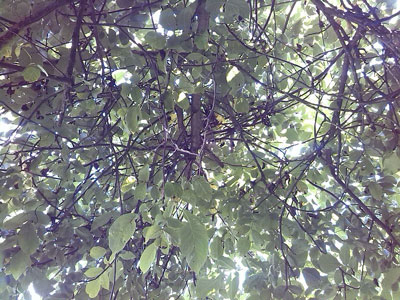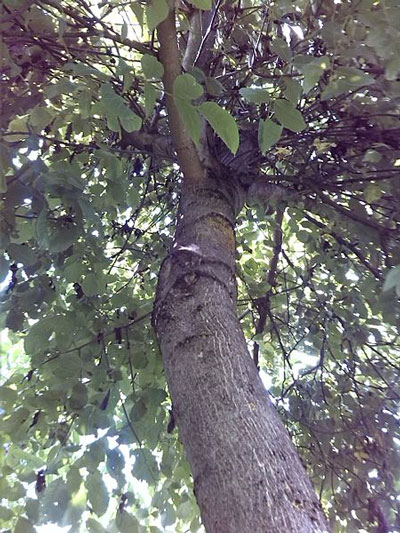Walnut Tree
Scientific classification
| Kingdom: | Plantae |
| Clade: | Angiosperms |
| Clade: | Eudicots |
| Clade: | Rosids |
| Order: | Fagales |
| Family: | Juglandaceae |
Of all the hardwoods in the world, Walnut has the highest resourceful value. This walnut tree not only gives us nuts that have excellent taste, but also timber that is cherished by carpenters as well as sculptors. The walnut tree has multifaceted uses; besides, it became a favorite choice for those building their own houses, and walnut products are used by them for decorating their houses with this variety. Even though the Walnut tree is grown mainly for its wood and nuts, we often find black walnuts growing on site of landscapes where they primarily provide shade. Other landscape plants when planted adjacent to or under the walnut tree are likely to turn yellow, fade, and wither away. The cause for this is that this tree generates a poisonless and colorless chemical named hydrojuglone, which is found in their roots, inner bark, stems, leaves, and fruit hulls. When they are out in the open for various purposes, this hydrojuglone gets oxidized into allelochemical juglone, which is a very poisonous chemical.
Many other trees of this category like the English walnut, pecan and hickories too generate juglone, except that quantity produced is smaller than that of the black walnut. Allelopathy is the process by which some plants that generate the chemical juglone do harm to the neighboring plants. (Several other normally planted landscape trees which possess the property of allelopathy are: Tree-Of-Heaven, Southern Max Myrtle, Sugar Maple, Hackberries, Cottonwood, Red Oak, American Sycamore, Black Cherry Sassafrass, Black Locust and American Elm.)
Landscapers take pleasure in working with this beautiful tree. Other than its beauty, the walnut trees are valued for endowing immense shade. The shade of this tree is a gift for the fans of wildlife that frequently grow these walnut trees on their own land for the sole purpose of alluring squirrels, birds and deer.
Traditionally the walnut tree was considered as “The Nut of Jupiter,” since the many qualities of this tree make is commendable to the gods. Nowadays, many users of this walnut tree have a great appreciation only for the nuts, unaware of the fascinating facts behind it.
Anatomy
One will not fail to spot a walnut tree. A fully grown walnut tree shoots up to a height of 100 ft with their leaves spreading as far as 40 feet as a canopy, even though the majority of them spread to an average of 60 – 70 feet. This tree has longevity of up to 200 years.
Besides its alarming long life and physical appearance, the several other noteworthy attributes are as follows:
- Leaves: The leaves of the walnut tree are compound, which means their orientation consists of a single stem having many individual leaflets. In an individual leaf we see as much as 23 leaflets. The lengthy foliage stays green till autumn, after which the foliage become yellow and drops off from the tree.
- Fruits: the characteristics of the fruit of this tree are remarkable. The nut is enclosed in a hard shell, which is brown in color, round in shape, with many furrows and grooves. The Black Walnut’s shell is colored green, but when ripened turns almost black.
- Flowers: In spring the flowers of these walnut trees with greenish yellow hue droops like catkin, which envelops the entire tree.
- Bark: The bark of a fully grown walnut tree exhibits ridges that are deep and of diamond shape design, colored from dark brown to deep gray.
The walnut trees have a speedy growth; few of them reach heights up to 25 ft., within a span of 10 years.
Habitat
Walnut trees are mainly planted in the continent of North America, where California the leading supplier of the walnut trees. The walnut trees thrive well in the various regions of the planet like:
- Italy
- Turkey
- France
- Yugoslavia
- Romania
- India
- Iran
- China
GROWING AT HOME

Soil for Planting
Walnut trees are adjustable with the majority of soils, however, they favor properly drained alkaline loams (one that is much sandy or clayey), which retain moisture.
As far as the pH is concerned the walnut tree is considerably adaptable to soils varying from 6.0 and 6.5 pH, which is ideal. However, it doesn’t matter if the pH varies from 5 – 8.
Select a site where the soil is loamy to a depth of 3 ft. (0.9m) and is properly drained. Stay away from uneven highlands, slopes that are very steep, soil containing a great quantity of clay, as well as rocky soil. The portion at the base of slopes facing the north is good in mountainous terrain or they are positioned in the southern part of the hemisphere, facing the south.
Planting
Make holes that are as small as 2 – 3 in (5-7.5cm) in depth, position the walnut inclined at the base of these holes, fill in the dirt. While planting numerous trees ensure that the holes are at a distance of 10 – 12 ft (3.0 – 3.7 m) from each other.
- Juvenile trees that are less than 3m (10ft) set easily, in order to protect them from damage of the tap root, shun plants that are pot-bound.
- In the initial stage of the tree, slight shade is acceptable for their growth; however total sunshine is the best.
- As per the cultivar ‘Broadview’ walnuts prefer semi self contained fertility, however cross-pollination enhances the harvest.
- Walnut trees that are planted during the winter or autumn set very well, providing they are placed at a distance of 12 to 18 m (40 to 60feet) from each other.
Watering
Begin watering your walnuts weekly once. Water them thrice a week when summer is nearing.
When the summer season ends, the walnuts must sprout. Watering your plant is good, however, reduce watering your plant by once a week. When it is autumn, you need not put in much effort.
Walnut trees are varieties that require water. These trees flourish well in total sunshine, damp and deep soil. Juvenile trees require excess water when compared to the grown up ones, even though both of them are profited when the weeds are removed and mulched.
Care
- At the end of February, provide the soil with a fertilizer that is balanced, with a measure of 100 g for every sq, m. (3 Oz). Further at the end of March, add ammonia sulfate to a measure of 35 g for every sq.m. (1 Oz). Also dried poultry manure is fine in measures of 200 g (6 Oz) for every sq.m.
- Freshly planted trees require support and water during spring and summer, when the weather is dry. This will help the plants have a sound foundation. Applying mulch consisting of properly decayed compost round the base of the tree helps the tree to hold the moisture.
Pest and Pesticides
Even though walnut trees are not affected by disease and pests, they are liable to be affected by the following:
- There is possibility of destruction of the whole crop by the Gray squirrels. Therefore, wrap the tree with plastic tree guard so that the squirrels find it difficult to hold on and also to lift up the branches hanging low to about 1.8 to 2.5 m (6 to 8 ft.)
- Pouch-shaped galls form on the leaves of the walnut made by the pests named walnut leaf gall which are not prominent.
- Anthracnose and walnut leaf blotch infect the leaves. Even though there is no chemical that destroys this sickness, gathering and discarding the affected leaves, deters the life cycle of this infection.
- It is possible for the codling moths to destroy the nuts.
Harvest Month and Storage
While growing the nuts are settled in a pit in the shell engulfed by leather like fibrous covering which bursts in autumn when the nuts ripen. This is the right time for eating these nuts; however the texture will be like rubber. The normal procedure is to get them dried. In other words, they are stored well. Drying procedure of the nuts is as given below:
- Initially select a few nuts and break them open, in order to ensure that the kernel inside is completely developed; in case it is not developed you need not spend your time wastefully on the remaining.
- In case you find all the nuts in good form, discard all the fibrous casings by means of a wire brush prior to storing to protect from mold formation.
- While removing the casings wear gloves on your hands because your skin gets stained by the walnut.
- Dry your walnuts in an oven at a temperature not exceeding 40°C (104°F)
- When the nuts are completely dry, store them in a place that is dry and cool.
- As birds and squirrels eat these nuts, harvest them daily.
The nuts fail to ripen in places where the temperature is cool. Such nuts are pickled when green, prior to the outer casing starting to become hard.
It is not recommended to harvest the walnuts when their outer husks have become black and soft, this leads to spoiling the flavor of the inside nut.
Varieties

There exist about two dozen varieties of the Walnut tree on earth, even though the majority of them are indigenous to the United States. Of the most famous ones some are:
- Butternut
- Black Walnut
- Arizona Walnut
Other varieties of Walnut tree are:
- Bolivian Walnut
- Northern California Walnut
- Manchurian Walnut
- Japanese Walnut
- Southern California Walnut
- Andean Walnut
- West Indian Walnut
- Little Walnut
- English Walnut

Having discovered a fondness for insects while pursuing her degree in Biology, Randi Jones was quite bugged to know that people usually dismissed these little creatures as “creepy-crawlies”.







